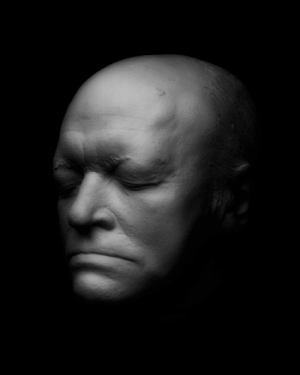Thinking about what it might mean to stand at the intersection of technology and the humanities has resulted in an exploration with a very circuitous route.
The Network has been infused with humanity, with every aspect of human character— the bright possibilities and the tragic flaws.
On May 29, 1919, Arthur Stanley Eddington took some photographs of a total eclipse of the sun. Eddington had gone to Africa to conduct an experiment that might determine whether Newton’s or Einstein’s model was closer to physical reality.
During the eclipse, he took pictures of the stars in the region around the Sun. According to the theory of general relativity, stars with light rays that passed near the Sun would appear to have been slightly shifted because their light had been curved by its gravitational field. This effect is noticeable only during eclipses, since otherwise the Sun’s brightness obscures the affected stars. Eddington showed that Newtonian gravitation could be interpreted to predict half the shift predicted by Einstein.
My understanding of the physics is rather shallow, my interest is more in the metaphorics— in how the word-pictures we use to describe and think about the universe changed based on a photograph. Where the universe lined up nicely on a grid before the photograph, afterwards, space became curvaceous. Mass and gravity bent the space that light passed through. Assumed constants moved into the category of relativity.
The Network also appears to be composed of a neutral grid, its name space, through which passes what we generically call payloads of “content.” Each location has a unique identifier; the only requirement for adding a location is that its name not already be in use. You can’t stand where someone is already standing unless you displace them. No central authority examines the suitability of the node’s payload prior to its addition to the Network.
The universe of these location names is expanding at an accelerating rate. The number of addresses on the Network quickly outstripped our ability to both put them into a curated index and use, or even understand, that index. Search engines put as much of the Network as they can spider into the index and then use software algorithms to a determine a priority order of the contents of the index based on keyword queries. The search engine itself attempts to be a neutral medium through with the nodes of the Network are prioritized based on user query input.
Regardless of the query asked, the method of deriving the list of prioritized results is the same. The method and production cost for each query is identical. This kind of equal handling of Network nodes with regard to user queries is the search engine equivalent of freedom, opportunity and meritocracy for those adding and updating nodes on the Network. The algorithms operate without prejudice.
The differential value of the queries and prioritized link lists is derived through an auction process. The cost of producing each query/result set is the same—it is a commodity—but the price of buying advertising is determined by the intensity of the advertiser’s desire. The economics of the Network requires that we develop strategies for versioning digital commodities and enable pricing systems linked to desire rather than cost of production. Our discussions about “Free” have to do with cost-based pricing for digital information goods. However, it’s by overlaying a map of our desires on to the digital commodity that we start to see the contours, the curvaceousness of this space, the segments where versioning can occur.
We’ve posited that the search algorithm treats all nodes on the Network equally. And more and more, we take the Network to be a medium that can fully represent human life. In fact, through various augmented reality applications, human reality and the Network are sometimes combined into a synthetic blend (medium and message). Implicitly we also seem to be asserting a kind of isomorphism between human life and the Network. For instance, sometimes we’ll say that on the Network, we “publish everything, and filter later.” The gist of this aphorism is that where there are economics of low-or-no-cost production, there’s no need to filter for quality in advance of production and transfer to the Network. Everything can be re-produced on the Network and then sorted out later. But when we use the word “everything,” do we really mean everything?
The neutral medium of the Network allows us to disregard the payload of contents. Everything is equivalent. A comparison could be made to the medium of language— anything can be expressed. But as the Network becomes more social, we begin to see the shape of our society emerge within the graph of nodes. Sigmund Freud, in his 1913 book entitled Totem and Taboo, looks at the markers that we place on the border of what is considered socially acceptable behavior. Ostensibly, the book examines the resemblances between the mental life of savages and neurotics. (You’ll need to disregard the archaic attitudes regarding non-European cultures)
We should certainly not expect that the sexual life of these poor, naked cannibals would be moral in our sense or that their sexual instincts would be subjected to any great degree of restriction. Yet we find that they set before themselves with the most scrupulous care and the most painful severity the aim of avoiding incestuous sexual relations. Indeed, their whole social organization seems to serve that purpose or to have been brought into relation with its attainment.
Freud is pointing to the idea that social organization, while certainly containing positive gestures, reserves its use of laws, restrictions and mores for the negative gesture. The structure of societal organization to a large extent rests on what is excluded, what is not allowed. He finds this common characteristic in otherwise very diverse socio-cultural groups. Totems and taboos bend and structure the space that our culture passes through.
In the safesearch filters employed by search engines we can see the ego, id and superego play out their roles. When we search for transgressive content, we remove all filtering. But presumably, we do, as a member of a society, filter everything before we re-produce it on the Network. Our “unfiltered” content payloads are pre-filtered through our social contract. Part of the uncomfortableness we have with the Network is that once transgressive material is embodied in the Network, the algorithms disregard any difference between the social and the anti-social. A boundary that is plainly visible to the human— and is in fact a structural component of its identity and society, is invisible to the machine. Every node on the Network is processed identically through the algorithm.
This issue has also been raised in discussions about the possibility of artificial intelligence. In his book Mirror Worlds, David Gelernter discusses a key difference between human memory and machine memory:
Well for one thing, certain memories make you feel good. The original experience included a “feeling good” sensation, and so the tape has “feel good” recorded on it, and when you recall the memory— you feel good. And likewise, one reason you choose (or unconsciously decide) not to recall certain memories is that they have “feel bad” recorded on them, and so remembering them makes you feel bad.
But obviously, the software version of remembering has no emotional compass. To some extent, that’s good: Software won’t suppress, repress or forget some illuminating case because (say) it made a complete fool of itself when the case was first presented. Objectivity is powerful.
Objectivity is very powerful. Part of that power lies in not being subject to personal foibles and follies with regard to the handling, sorting, connecting and prioritizing of data. The dark side of that power is that the objectivity of the algorithm is not subject to social prohibitions either. They simply don’t register. To some extent technology views society and culture as a form of exception processing, a hack grafted on to the system. As the Network is enculturated, we are faced with the stark visibility of terrorism, perversity, criminality, and prejudice. On the Network, everything is just one click away. Transgression isn’t hidden in the darkness. On the Network, the light has not yet been divided from the darkness. In its neutrality there is a sort of flatness, a lack of dimensionality and perspective. There’s no chiaroscuro to provide a sense of volume, emotion, limit and mystery.
And finally here’s the link back to the starting point of this exploration. A kind of libertarian connection has been made between the neutral quality of the medium of the Network and our experience of freedom in a democratic republic. The machine-like disregard for human mores and cultural practices is held up as virtue and example for human behavior. No limits can be imposed on the payloads attached to any node of the Network. The libertarian view might be stated that the fewest number of limitations should be applied to payloads while still maintaining some semblance of society. Freud is instructive here: our society is fundamentally defined by what we exclude, by what we leave out, and by what we push out. While our society is more and more inclusive, everything is not included. Mass and gravity bend the space that light passes through.
The major debates on the Network seem to line up with the contours of this pattern. China excludes Google and Google excludes China. Pornographic applications are banished from Apple’s AppStore. Android excludes nothing. Closed is excluded by Open, Open is included by Closed. Spam wants to be included, users want to exclude spam. Anonymous commenters and trolls should be excluded. Facebook must decide what the limits of speech are within the confines of its domain. The open internet excludes nothing. Facebook has excluded the wrong thing. The open internet has a right to make your trade secrets visible. As any node on the Network becomes a potential node in Facebook’s social/semantic graph, are there nodes that should be taboo? How do we build a civil society within the neutral medium of the Network? Can a society exist in which nothing is excluded?
In the early days of the Network, it was owned and occupied by technologists and scientists. The rest of humanity was excluded. As the Network absorbs new tribes and a broader array of participants, its character and its social contract has changed. It’s a signal of a power shift, a dramatic change in the landscape. And if you happen to be standing at the crossroads of technology and the humanities, you might have a pretty good view of where we’re going.
One Comment





